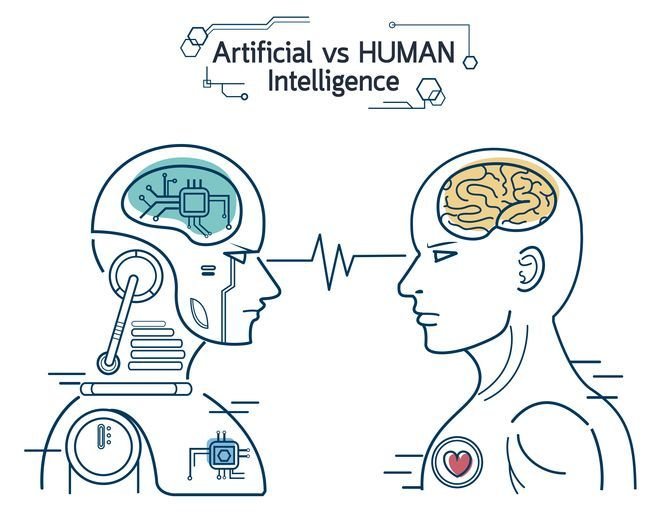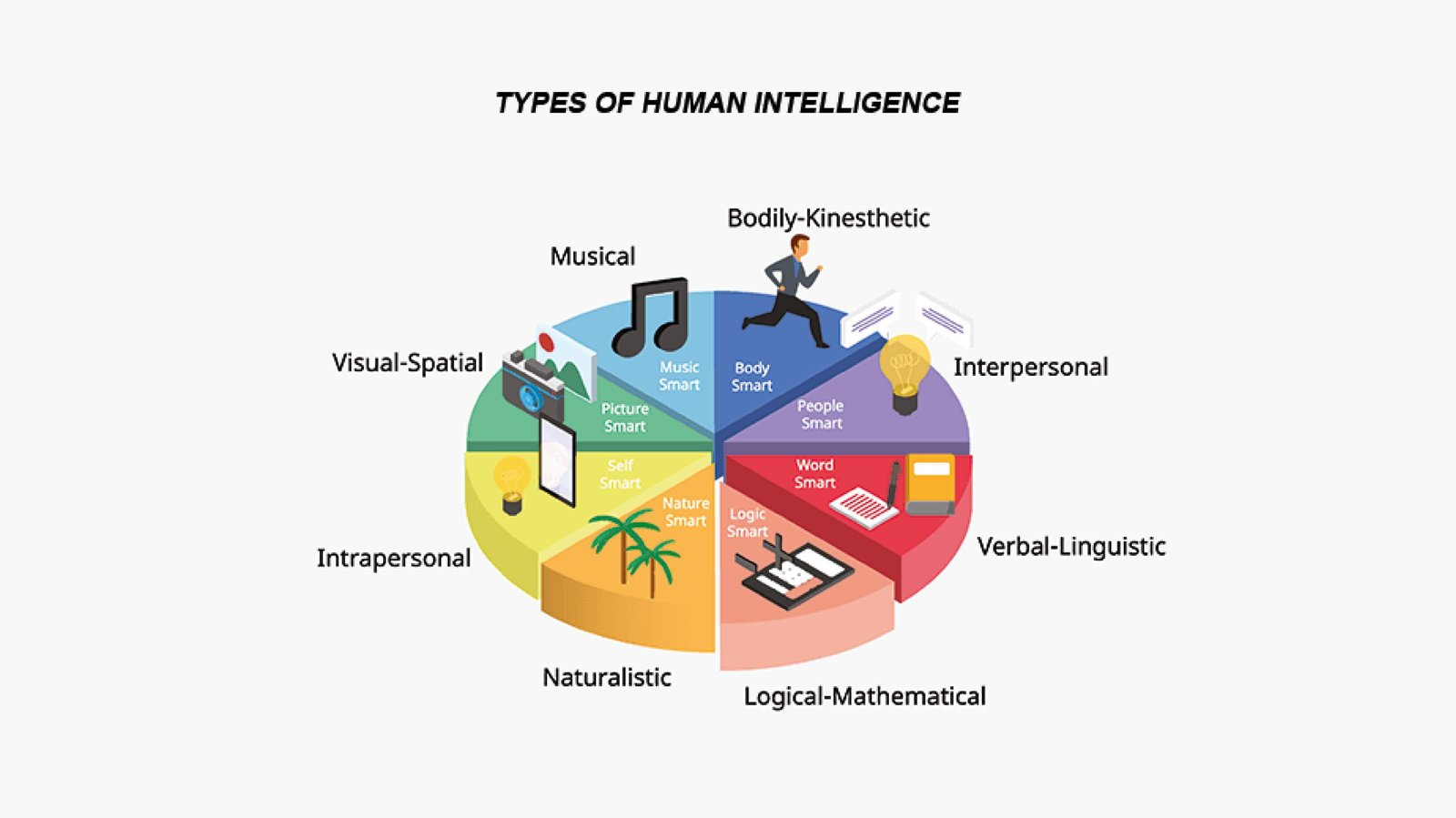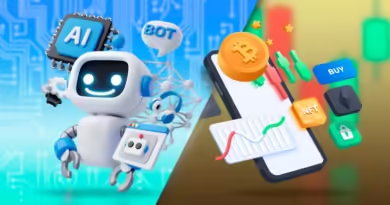AI vs Human Intelligence: Who’s Really Smarter? The Shocking Truth Revealed
The debate between Artificial Intelligence (AI) and human intelligence has been ongoing for decades. With rapid advancements in AI technology, it is no longer a question of whether AI will surpass human intelligence, but rather when and to what extent it will do so. In this article, we explore the distinctions between AI and human intelligence, their respective strengths and limitations, and what the future might hold in terms of AI’s impact on society, jobs, and human potential.

What Is Artificial Intelligence?
Artificial Intelligence refers to the simulation of human-like cognitive functions by machines, particularly computers. These functions include learning, reasoning, problem-solving, perception, and language understanding. AI can be categorized into narrow AI and general AI. Narrow AI is specialized in performing a specific task, like facial recognition, language translation, or playing chess, and it operates based on predefined algorithms. General AI, on the other hand, is still theoretical, representing an AI system that could perform any intellectual task that a human can do.
The core foundation of AI lies in machine learning, where algorithms improve their performance over time by analyzing large datasets. The more data AI systems are exposed to, the better they become at making predictions, recognizing patterns, and completing tasks autonomously. With recent breakthroughs in deep learning and neural networks, AI has made strides in areas such as computer vision, natural language processing, and autonomous driving.
What Is Human Intelligence?
Human intelligence refers to the cognitive capabilities that humans possess, which include perception, learning, reasoning, problem-solving, emotional intelligence, and creativity. Unlike AI, human intelligence is not confined to a set of rules or tasks but is deeply connected to the complexity of the brain and its ability to adapt to diverse environments.
The human brain consists of approximately 86 billion neurons that communicate through synapses, creating a highly complex network of connections. This neural architecture allows for flexibility, creativity, and emotional depth in decision-making. Moreover, humans possess consciousness, self-awareness, and the ability to reason abstractly, which are critical components of intelligence. Human intelligence is shaped by both genetic predisposition and life experiences, making it adaptive and dynamic over time.

Artificial Intelligence vs. Human Intelligence: A Comparison
When comparing AI and human intelligence, it is important to highlight their key differences:
- Processing Power: AI systems, especially those built on supercomputers or neural networks, can process vast amounts of data far faster than humans. They excel at performing repetitive tasks quickly, analyzing data at scale, and making decisions based on patterns found in that data.
- Adaptability: While AI can learn from data, it still lacks the flexibility of human intelligence. Human beings can apply their intelligence to a wide range of tasks, even unfamiliar ones, by drawing upon their past experiences and reasoning. AI, however, typically excels in narrowly defined tasks and struggles when faced with ambiguity or novel situations.
- Creativity: Humans possess a remarkable ability to create, whether it is through art, music, or problem-solving. This creativity is not just based on pattern recognition but on inspiration, intuition, and emotional depth. AI, while capable of generating creative outputs (e.g., generating art or composing music), does so by recombining patterns in existing data, lacking the genuine spark of human creativity.
- Emotional Intelligence: Emotional intelligence, the ability to understand and manage one’s emotions and recognize emotions in others, is a significant facet of human intelligence. AI, in contrast, is not capable of experiencing emotions and cannot comprehend human feelings beyond what has been programmed into it. This limits AI’s ability to engage in deeply human interactions or decisions that require empathy.
- Learning Mechanism: Humans have the ability to learn and apply knowledge across different domains with minimal supervision. While AI requires large datasets and extensive training to learn effectively, humans can often generalize knowledge from one context to another, enabling lifelong learning and adaptation.

What Brain Cells Can Be Tweaked to Learn Faster?
Recent advancements in neuroscience and AI have highlighted that there may be ways to tweak the brain’s learning mechanisms for faster acquisition of knowledge. Some of the processes in human brain cells that could be targeted include:
- Synaptic Plasticity: This refers to the ability of synapses (the connections between neurons) to strengthen or weaken over time based on activity. By enhancing synaptic plasticity, it may be possible to accelerate learning and memory formation. Research into brain-machine interfaces (BMIs) and neurostimulation techniques is exploring ways to harness synaptic plasticity to improve cognitive function.
- Neurogenesis: Neurogenesis is the process by which new neurons are created, primarily in the hippocampus, the area of the brain responsible for learning and memory. Boosting neurogenesis could improve cognitive function and learning speed, particularly in the context of memory consolidation.
- Dopamine Regulation: Dopamine plays a central role in motivation, reward, and learning. By regulating dopamine levels in specific areas of the brain, such as the prefrontal cortex, it may be possible to enhance focus and motivation, making learning more efficient.
- Cognitive Training: The brain’s ability to learn can also be improved through specific types of cognitive training and exercises. These exercises are designed to stimulate neural activity and strengthen brain circuits involved in learning and memory.
While these methods of tweaking brain function are still in early stages, they offer intriguing possibilities for enhancing human intelligence and learning speed, potentially narrowing the gap between human and AI learning capabilities.

Artificial Intelligence vs. Human Intelligence: What Will the Future of Human vs AI Be?
The future of AI and human intelligence is a subject of intense speculation. While AI continues to advance rapidly, it is likely that it will complement human intelligence rather than fully replace it. Several potential scenarios could unfold:
- AI as an Augmentation Tool: In this scenario, AI will work alongside humans to enhance their cognitive capabilities. Tools like AI-driven analytics, decision support systems, and cognitive enhancement technologies could enable humans to solve complex problems more efficiently. Rather than replacing humans, AI will help amplify their natural abilities.
- AI-Assisted Creativity: In creative industries, AI could become a powerful assistant, enabling artists, writers, and musicians to explore new realms of creativity. AI could automate certain aspects of the creative process while still relying on human input for inspiration and emotional depth.
- Collaborative Intelligence: The future may see the rise of collaborative intelligence, where humans and AI work together seamlessly. AI could handle routine tasks, data analysis, and optimization, while humans focus on strategic decision-making, emotional intelligence, and ethical considerations. This partnership could lead to enhanced productivity and problem-solving capabilities across various industries.
- Autonomous AI: Another possibility is the rise of autonomous AI systems capable of performing complex tasks independently of human intervention. This could have significant implications for industries like healthcare, manufacturing, and transportation. However, it also raises concerns about ethics, control, and potential job displacement.

Impact of AI on the Future of Jobs
One of the most pressing concerns regarding AI is its impact on the job market. AI has the potential to automate tasks that were once performed by humans, leading to the displacement of certain jobs. For example, AI-driven chatbots are already replacing customer service representatives, and autonomous vehicles could replace truck drivers.
However, AI also has the potential to create new job opportunities. As AI systems are deployed in more industries, there will be a growing demand for AI specialists, data scientists, and engineers who can build, maintain, and optimize these systems. Furthermore, the integration of AI into various sectors may lead to new types of jobs that we cannot yet foresee, much like the internet revolutionized the job market in the late 20th century.
The key to addressing AI-induced job displacement lies in retraining and reskilling the workforce. Governments, educational institutions, and corporations will need to collaborate to provide workers with the skills necessary to thrive in an AI-driven economy.

Will AI Replace Humans?
The question of whether AI will ever replace humans is complex and multifaceted. While AI may outperform humans in specific tasks, such as processing large amounts of data or performing repetitive tasks, it is unlikely that AI will ever fully replicate the depth and richness of human intelligence.
AI lacks the emotional intelligence, creativity, and consciousness that define human experience. It is not capable of making ethical decisions, understanding the nuances of human relationships, or engaging in abstract reasoning in the same way humans do. Instead of replacing humans, AI is more likely to transform how humans work, live, and interact with technology.
The future may see a shift towards a symbiotic relationship where AI enhances human capabilities rather than replacing them. In this sense, AI and human intelligence will coexist, each amplifying the other’s strengths.

Conclusion
The debate between AI and human intelligence is far from over. While AI continues to advance at an unprecedented rate, it remains a tool that complements, rather than replaces, human cognition. AI excels in processing data, automating tasks, and providing insights, but it lacks the adaptability, creativity, and emotional depth that characterize human intelligence. The future will likely see a harmonious relationship between AI and humans, where both work together to solve the challenges of tomorrow. Whether it’s in the workplace, creative fields, or daily life, the combination of AI’s power and human ingenuity promises to unlock new possibilities for innovation and progress.




